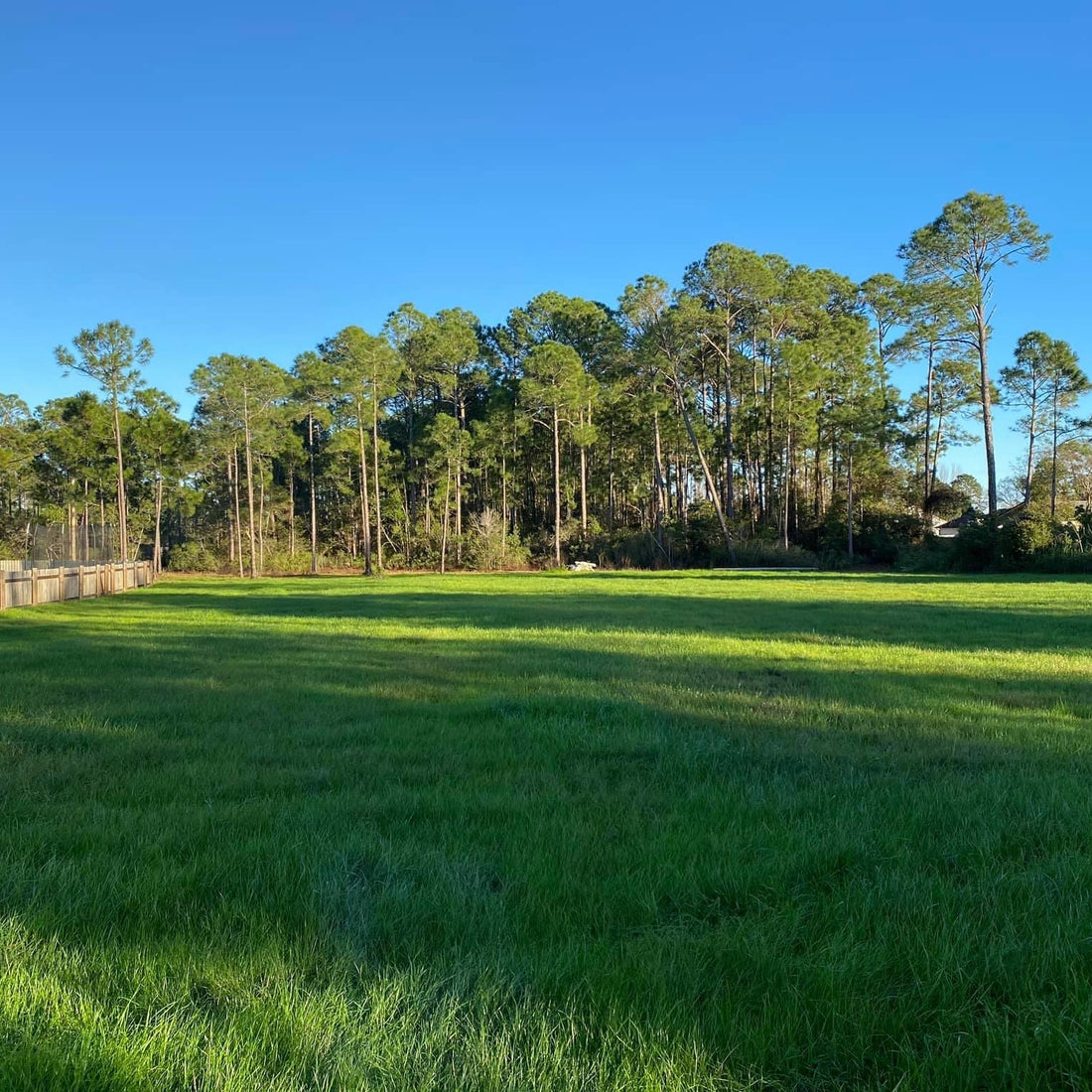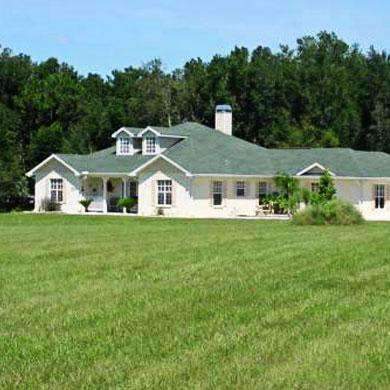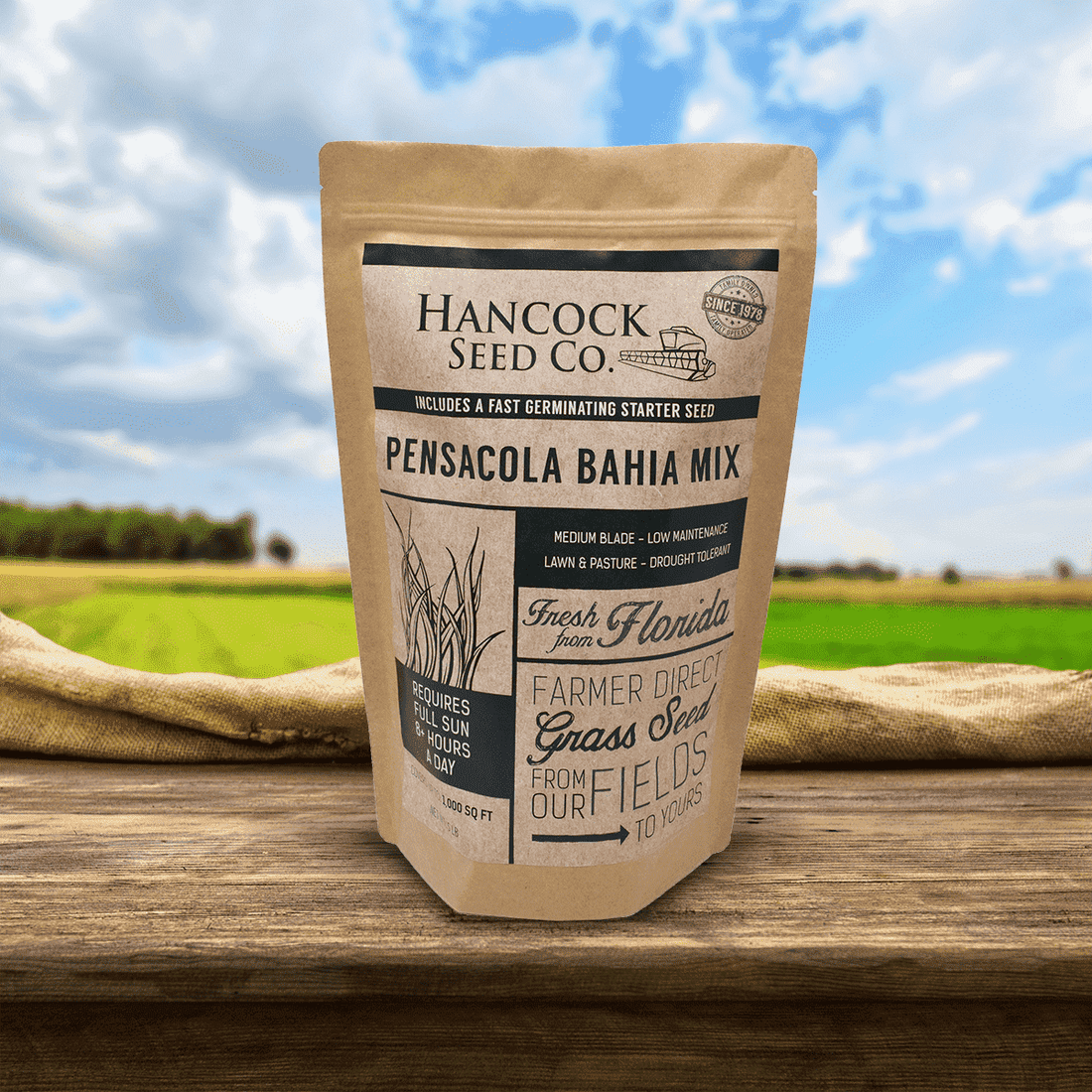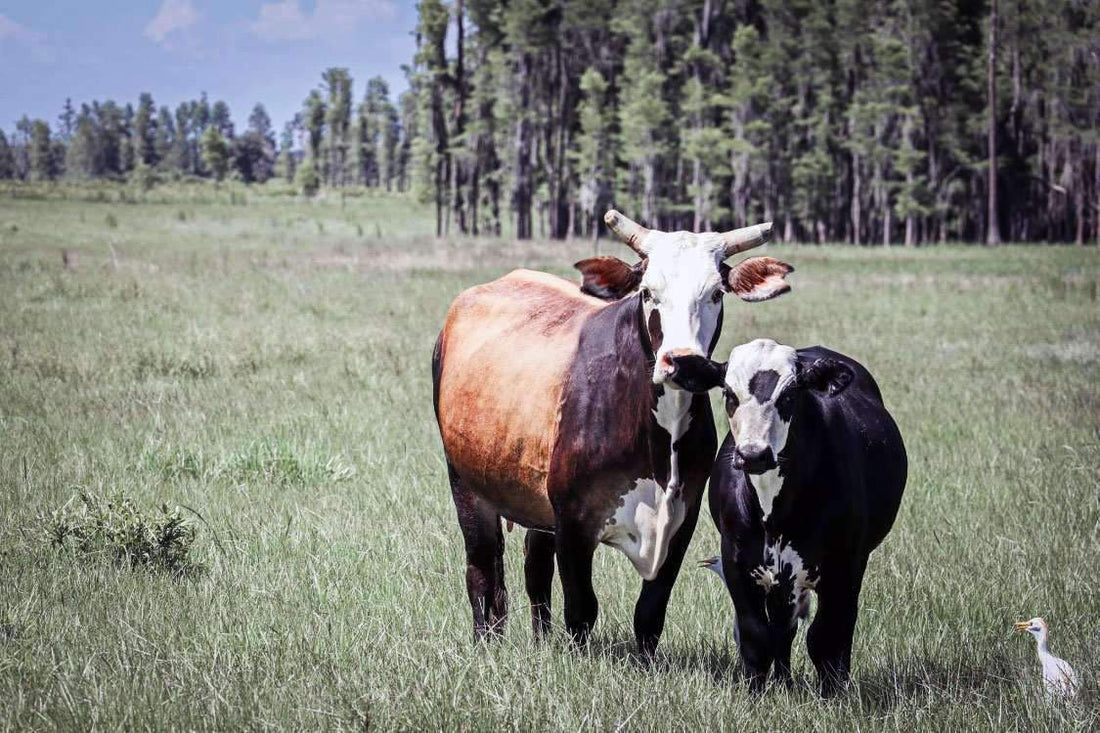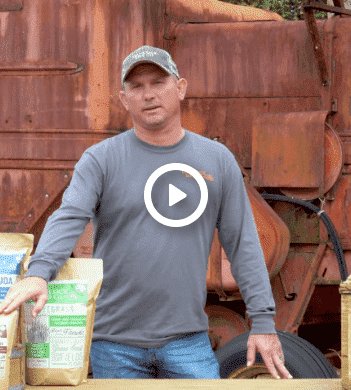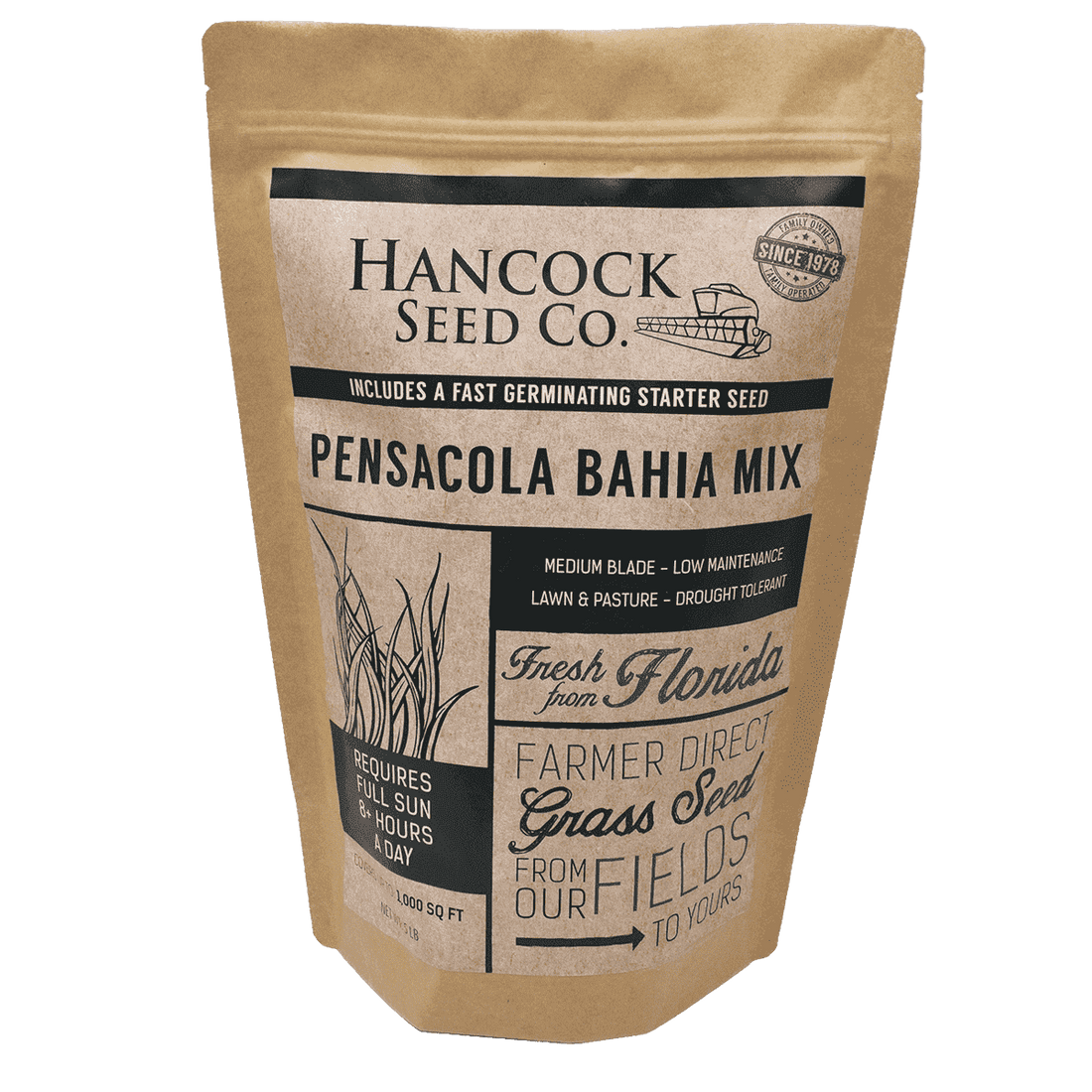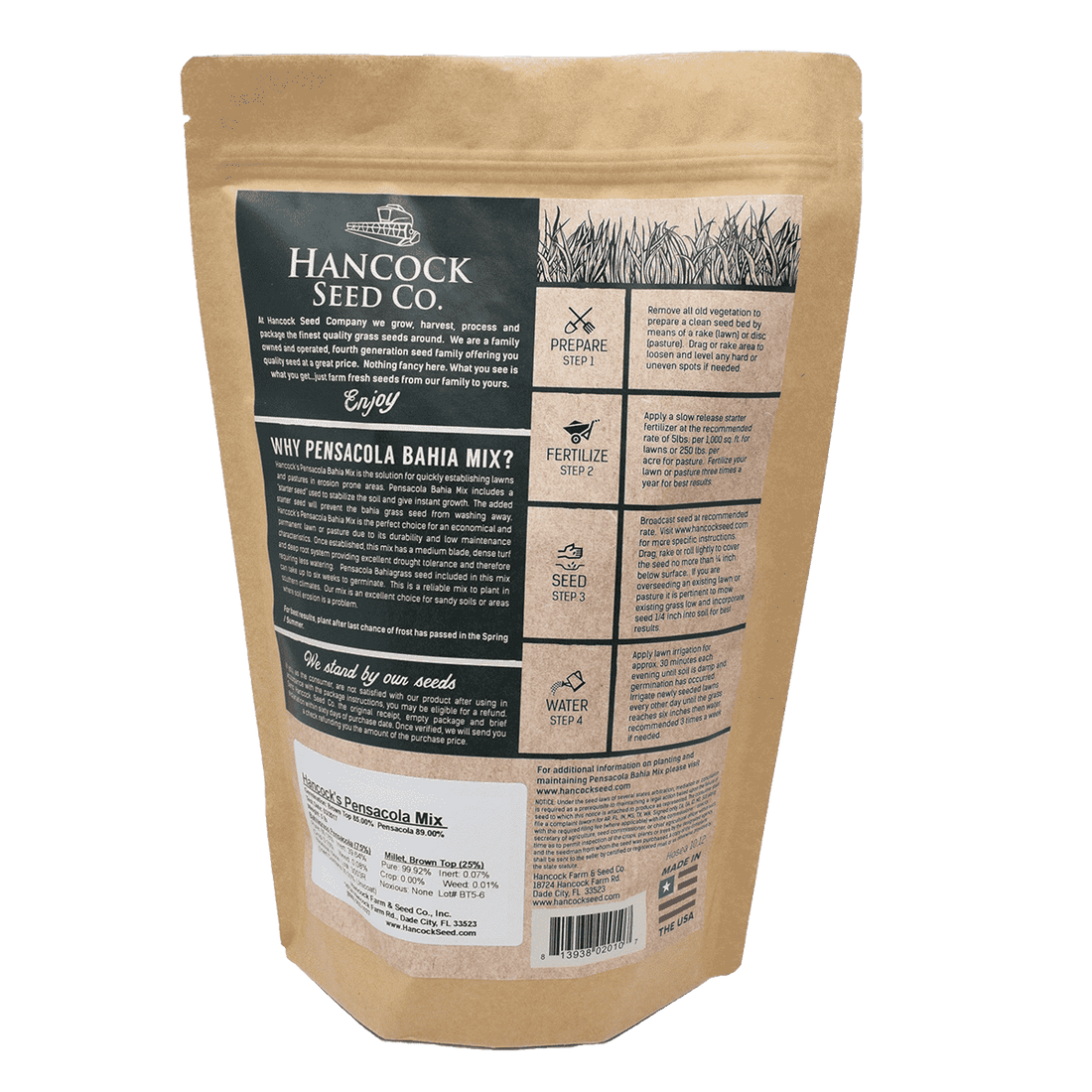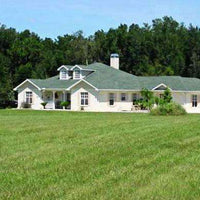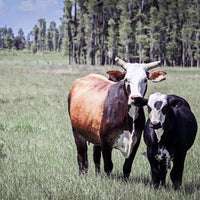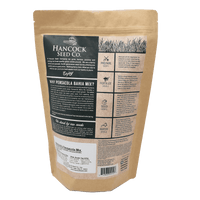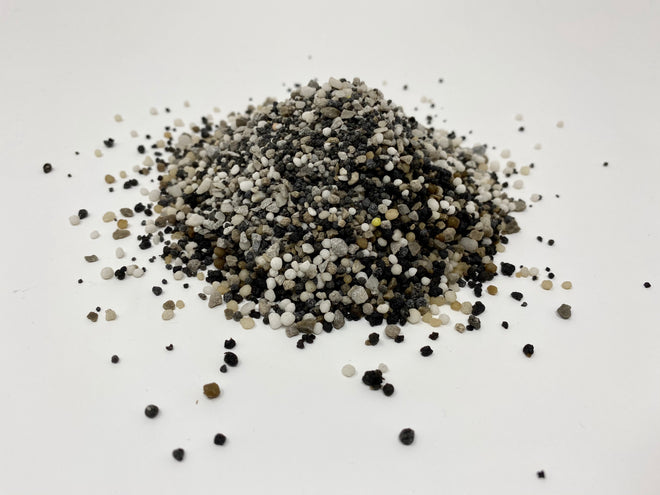
- When to plant:
- Fall, Winter
- Fertilizer:
- Hancock's 16-04-08 Lawn & Pasture Fertilizer
- Seeding rate:
- 50 - 100 lbs. per acre
- Overseeding rate:
- 50 lbs. per acre
- Seeding depth:
- 1/4 inch
- Ideal ph:
- 5.0 - 6.0
- Gmo:
- No
- Inoculant needed:
- No
- Coated or raw:
- Coated
- Lifecycle:
- Perennial
- Climate zones:
- Transition Zone, Warm Season
Our Pensacola Bahia Grass Seed mixture is used for lawn and pasture applications in the southern climates. Pensacola Bahia is commonly used for lawns, pastures and roadside applications from North Carolina to California. It is excellent for sandy soils that many other grasses struggle to survive. Our Pensacola Bahia is harvested, processed and distributed from Hancock Farm and Seed Company insuring the highest quality Pensacola Bahiagrass seed available.
Product Information
- Application or Use: Lawn, Pasture, Ground Cover, Livestock Grazing, Cover Crop, Ground Cover, Erosion Control
- Germination Time: Ryegrass - 5 - 7 days; Pensacola Bahia - 21 - 30 days, under optimal conditions
- Growing Locations: Warm Season Zone, Transition Zone
- Height: Lawn - 3 - 5 inches or Pasture - 8 - 20 inches
- Sunlight Requirements: 8+ hours, full sun for best results
- Tolerance: Drought tolerance, and exceptional insect and disease resistance; moderate tolerance to sandy soils.
- When to Plant: Recommended planting time is fall and winter when night time temperatures are consistently below 65 degrees.
Note: Pensacola Bahiagrass is not recommended in high quality lawn applications due to prolific summer seed sprout production. For high quality bahia grass lawn applications we recommend our Argentine Bahia grass seed mixture.
Pensacola Bahia grass is commonly used for lawn and pasture applications across the Southern United States including Florida, Georgia, North Carolina, South Carolina, Tennessee, Louisiana, Alabama, Mississippi, North East Texas, and South West California. For more information on how well Pensacola Bahiagrass grows in your exact location please call or contact us.
Pensacola Bahiagrass is grown, harvested and processed by Hancock Farm & Seed Co., Inc.
Pensacola Bahiagrass Mix - Fall & Winter Mix
- Pensacola Bahiagrass (Coated)
- Gulf Annual Ryegrass
- Brown Top Millet
Mis is subject to change.
This mix is shipped October 15 through February 28th, unless otherwise requested.
Our Fall & Winter Pensacola bahia grass seed mixture contains 75% Coated Pensacola Bahiagrass and 25% Annual Rye Grass. The Annual Rye grass is added to assist in fast ground coverage, retaining soil moisture and preventing soil and seed erosion. The Annual Rye will also provide an effective spring germination environment for the permanent Pensacola Bahia grass. As nighttime spring temperatures increase to 65 to 70 degrees the Annual Rye grass will begin to die out. As the Annual Rye grass begins to die out the Pensacola Bahiagrass will begin to emerge through the established Annual Rye grasses root structure. Pensacola Bahiagrass seed requires 2-3 weeks of constant 65 to 70 degree nighttime temperatures combined with soil moisture to stimulate germination. It is very important to water and mow the newly seeded areas in the spring. This prevents the Annual Rye grass from overcrowding and shading out the young Pensacola Bahiagrass seedlings as they emerge. To insure a successful seeding and establishment experience please refer closely to the planting guide provided with your order.
Coated Seed vs Raw Seed
Coated seed contains a clay-based surrounding shell that increases moisture retention and helps to reduce insect or fowl consumption. Coated seed contains approximately 50% coating weight, or inert weight, per pound of seed.. Raw seed features no fillers, coatings, or treatments.
Rave Reviews
It's no secret why Hancock's Pensacola Bahia Grass Seed Mix is so popular. The answer is "because it works"! Just click below to see a few of our favorite reviews from clients who have planted Hancock's Pensacola Bahia Grass Seed Mix:
*Product packaging may appear different than what is pictured.
Over seeding an existing lawn - Bare spots can be easily filled in by spreading the area by hand or with a spreader. Remember, after spreading the seed to lightly rake in the seed to cover no deeper than 1/4 inch. To properly over seed the entire lawn, use 2 to 5 lbs. per 1000 sq. ft. after removing as much unwanted dead or living vegetation.
Pasture Applications
New Pastures - Plant 50 to 100 lbs. per acre.
(25 lbs. takes 12-24 months to fully sod the pasture.)
*The more seed applied to the lawn or pasture on the first planting the faster the lawn or pasture will fully establish a sod or grass base and prevent future over seeding to fill in bare spots.
Over seeding an existing pasture: Over seeding rates depend on the amount of established or existing grass in the pasture area. Common applications for over seeding are 25- 50 lbs. per acre.
Fertilization Recommendations:
Lawn Fertilization: Apply 5-10 lbs. of 16-04-08 slow release fertilizer per 1000 sq. ft. four times a year (Late Spring, Mid Summer, Late Summer, Early Fall) for the first two years. After a fully established lawn has been accomplished apply 5 lbs. per 1000 sq. ft. two times (Mid Summer,Late Summer) a year.
Pasture Fertilization: Apply 250 lbs. - 350 lbs. of 16-04-08 slow release fertilizer per acre in Late Spring, Mid Summer and Early Fall. Animals that are grazing will damage the Bahiagrass pasture if the pasture is not properly fertilized annually. The grass must be provided with adequate nutrients to compete with the animals.
When choosing to start a new lawn, remove old vegetation by using a de-thatcher, power rake or tiller to kill the existing vegetation. Rake or drag the area to remove debris and dead grass for a clean area. Ensure the soil is leveled and loosened to allow the seed to have good soil contact once spread on a clean seed bed.
If you have an area with heavy weed coverage, we recommend starting fresh by killing and removing the existing vegetation. If you choose to use chemicals, herbicides or fertilizers, you must check with the product's manufacturer prior to planting new seed to ensure the proper waiting period.
When overseeding an existing area, mow your lawn at the lowest setting and bag the clippingsx. Rake or drag any areas that have dead thatch or debris.

Seed Quality
Hancock Seed is dedicated to delivering the best seeds possible to our customers. Hancock Seed grows and harvests many of our products, and we acquire the majority of the rest from other family farmers.
All these seeds are processed, packaged and shipped from Hancock Farm. This helps us ensure that our high standards are met. Unlike much of the competition, we refuse to sell you a seed that was not gathered during the last harvest. You will always receive fresh product from Hancock.
Every seed we grow comes with 40 years of experience behind it...you can rest assured that all of our products are cultivated in a method that assures its potential for growth.

Your cart ( 0 )

Our Pensacola Bahia Grass Seed mixture is used for lawn and pasture applications in the southern climates. Pensacola Bahia is commonly used for lawns, pastures and roadside applications from North Carolina to California. It is excellent for sandy soils that many other grasses struggle to survive. Our Pensacola Bahia is harvested, processed and distributed from Hancock Farm and Seed Company insuring the highest quality Pensacola Bahiagrass seed available.
Product Information
- Application or Use: Lawn, Pasture, Ground Cover, Livestock Grazing, Cover Crop, Ground Cover, Erosion Control
- Germination Time: Ryegrass - 5 - 7 days; Pensacola Bahia - 21 - 30 days, under optimal conditions
- Growing Locations: Warm Season Zone, Transition Zone
- Height: Lawn - 3 - 5 inches or Pasture - 8 - 20 inches
- Sunlight Requirements: 8+ hours, full sun for best results
- Tolerance: Drought tolerance, and exceptional insect and disease resistance; moderate tolerance to sandy soils.
- When to Plant: Recommended planting time is fall and winter when night time temperatures are consistently below 65 degrees.
Note: Pensacola Bahiagrass is not recommended in high quality lawn applications due to prolific summer seed sprout production. For high quality bahia grass lawn applications we recommend our Argentine Bahia grass seed mixture.
Pensacola Bahia grass is commonly used for lawn and pasture applications across the Southern United States including Florida, Georgia, North Carolina, South Carolina, Tennessee, Louisiana, Alabama, Mississippi, North East Texas, and South West California. For more information on how well Pensacola Bahiagrass grows in your exact location please call or contact us.
Pensacola Bahiagrass is grown, harvested and processed by Hancock Farm & Seed Co., Inc.
Pensacola Bahiagrass Mix - Fall & Winter Mix
- Pensacola Bahiagrass (Coated)
- Gulf Annual Ryegrass
- Brown Top Millet
Mis is subject to change.
This mix is shipped October 15 through February 28th, unless otherwise requested.
Our Fall & Winter Pensacola bahia grass seed mixture contains 75% Coated Pensacola Bahiagrass and 25% Annual Rye Grass. The Annual Rye grass is added to assist in fast ground coverage, retaining soil moisture and preventing soil and seed erosion. The Annual Rye will also provide an effective spring germination environment for the permanent Pensacola Bahia grass. As nighttime spring temperatures increase to 65 to 70 degrees the Annual Rye grass will begin to die out. As the Annual Rye grass begins to die out the Pensacola Bahiagrass will begin to emerge through the established Annual Rye grasses root structure. Pensacola Bahiagrass seed requires 2-3 weeks of constant 65 to 70 degree nighttime temperatures combined with soil moisture to stimulate germination. It is very important to water and mow the newly seeded areas in the spring. This prevents the Annual Rye grass from overcrowding and shading out the young Pensacola Bahiagrass seedlings as they emerge. To insure a successful seeding and establishment experience please refer closely to the planting guide provided with your order.
Coated Seed vs Raw Seed
Coated seed contains a clay-based surrounding shell that increases moisture retention and helps to reduce insect or fowl consumption. Coated seed contains approximately 50% coating weight, or inert weight, per pound of seed.. Raw seed features no fillers, coatings, or treatments.
Rave Reviews
It's no secret why Hancock's Pensacola Bahia Grass Seed Mix is so popular. The answer is "because it works"! Just click below to see a few of our favorite reviews from clients who have planted Hancock's Pensacola Bahia Grass Seed Mix:
*Product packaging may appear different than what is pictured.
Over seeding an existing lawn - Bare spots can be easily filled in by spreading the area by hand or with a spreader. Remember, after spreading the seed to lightly rake in the seed to cover no deeper than 1/4 inch. To properly over seed the entire lawn, use 2 to 5 lbs. per 1000 sq. ft. after removing as much unwanted dead or living vegetation.
Pasture Applications
New Pastures - Plant 50 to 100 lbs. per acre.
(25 lbs. takes 12-24 months to fully sod the pasture.)
*The more seed applied to the lawn or pasture on the first planting the faster the lawn or pasture will fully establish a sod or grass base and prevent future over seeding to fill in bare spots.
Over seeding an existing pasture: Over seeding rates depend on the amount of established or existing grass in the pasture area. Common applications for over seeding are 25- 50 lbs. per acre.
Fertilization Recommendations:
Lawn Fertilization: Apply 5-10 lbs. of 16-04-08 slow release fertilizer per 1000 sq. ft. four times a year (Late Spring, Mid Summer, Late Summer, Early Fall) for the first two years. After a fully established lawn has been accomplished apply 5 lbs. per 1000 sq. ft. two times (Mid Summer,Late Summer) a year.
Pasture Fertilization: Apply 250 lbs. - 350 lbs. of 16-04-08 slow release fertilizer per acre in Late Spring, Mid Summer and Early Fall. Animals that are grazing will damage the Bahiagrass pasture if the pasture is not properly fertilized annually. The grass must be provided with adequate nutrients to compete with the animals.
Instructions
When choosing to start a new lawn, remove old vegetation by using a de-thatcher, power rake or tiller to kill the existing vegetation. Rake or drag the area to remove debris and dead grass for a clean area. Ensure the soil is leveled and loosened to allow the seed to have good soil contact once spread on a clean seed bed.
If you have an area with heavy weed coverage, we recommend starting fresh by killing and removing the existing vegetation. If you choose to use chemicals, herbicides or fertilizers, you must check with the product's manufacturer prior to planting new seed to ensure the proper waiting period.
When overseeding an existing area, mow your lawn at the lowest setting and bag the clippingsx. Rake or drag any areas that have dead thatch or debris.















